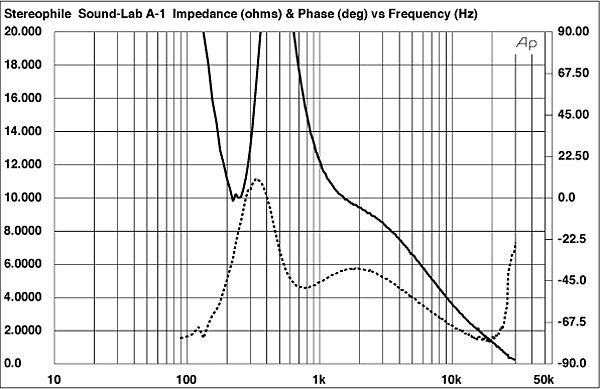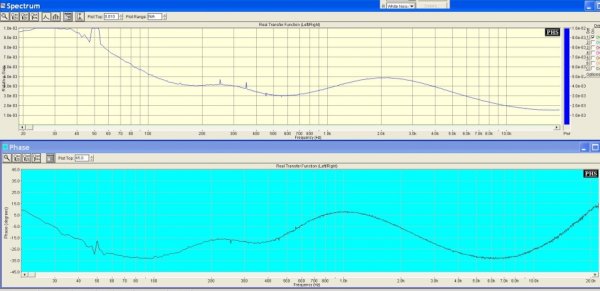There were several problems with Bascomb King's measurements. Here they are:I couldn't disagree more. I contend that OTLs do not have the same power versus impedance. The measurements of Ralph's MA-1 showed how big the discrepancy is between 4-16 ohms at 1% THD. The power levels aren't close. If you can come up with some other measurements of other OTLs that show they put out the same power as impedance rises up to 16 ohms, please publish them. My comparison of the RM-9 and the MA-1 was spot on in my opinion because the RM-9 fit the definition of a power paradigm amplifier as described by Ralph in his paper. The MA-1 did not.
1) the amp draws more power when driving 4 ohms. If the AC power sags, the output power goes down. He set that AC voltage on a variac when the amp was at idle. Being a class A2 circuit, it draws significantly more power at full power. The line voltage sag caused erroneous readings.
2) we found 2 tubes with bad sections in the amp when it was returned. This too would cause lower power output
3) it is evident from his measurements that Bascomb had one speaker terminal at ground. This caused the amp to have greater distortion at full output on account of uneven drive to the power tubes, and also less power.
The actual power output of the MA-1 is 135 watts into 4 ohms, 140 into 8 and 150 into 16. At power levels above 11 ohms the power output of the amp is decreasing, at 30 ohms it is still 145 watts. If you convert this to decibels, the differences at all impedances might be about 1 db. Please refer to the diagram in the manufacturer's response where this is pointed out.
That's your opinion and I don't agree. Frankly, since Ralph twists everything around including even his own words to suddenly mean something else other than what was originally written and he is relentless in his attacks on me and the mods aren't stepping in to stop the nonsense, I'm not posting anymore on this thread even though I started it because you can't have a decent discussion with someone who is bent on subterfuge and name calling. I'm sick of the nonsense and I started this thread to eliminate the nonsense of the other thread which started this one off. I'm off of this merry-go-round. All of this going around in circles is just way too much.
There have been no twisted words. I maintain that you have failed to read and understand the article I wrote. That article has been up for about seven years and has been read by thousands of people at this point. From time to time people have made suggestions to make it more clear. If you have some I am happy to entertain them.
So far I've not resorted to name-calling. I have called you out on Logical Fallacies. Its not personal- its just that a Logical Fallacy is an inherently false argument. It makes intelligent debate impossible. If you read the page I have now linked several times, familiarize yourself with how the fallacies work, and then refrain from them, then we can have a reasonable discussion. I implored you to do this at the very beginning of this thread.
OK - so power paradigm amps are those with damping factors roughly <20, not < 100. And these will offer roughly constant power to a varying impedance load. Then how do we explain andy_c's graph in post #33???
Andy's graph shows the response of amplifiers with varying output impedance. What we can see from this graph is that if the resonant point of the speaker is not set correctly, it could result in too much bass. This is a parameter that the speaker designer can adjust with cabinet size, port size and so on. Duke has elsewhere mentioned some of these techniques.
You haven't described this "black box technique", nor the formula from the Radiotron Designer's Handbook.
The black box technique is taught in engineering and technical school classes as a method of obtaining the impedance of an unknown circuit. In this case the circuit makes some power so we simply find out how much power it can make and into what impedance. As you then lower the load impedance from that point it will be observed that at some z impedance below that point the output power will be cut in half. The missing power is being dissipated in the output section itself- it therefore follows that the output section must be the same impedance as the load.
But measuring output impedance is done the same way regardless of the type of amplifier. You short the input of the amp, inject an AC current into its output, then measure the amplitude of the resulting AC output voltage. The ratio of the output voltage amplitude to the amplitude of the injected current is the magnitude of the output impedance. You just have to make sure the injected current is high enough so the measured output voltage is well above the noise, yet not so high that it causes the amp to operate in a nonlinear manner.
This is the standard method used if you are operating in the Voltage Paradigm. It is useful because the amplifier is able to respond to the injected signal via its feedback mechanism. However it does not actually measure the impedance of the output section itself- it is a measure of the servo gain. How is this different? Simple. If you remove the feedback you would get a higher impedance number. If you add more, it will go down. Now if the output impedance is in fact lower, adding more feedback will get you more power into lower impedance loads- Ohm's Law (and the Power formula) requires it. But that does not happen in reality. If I add 40 db of feedback to our M-60, we can get an output impedance that is about 0.1 ohms. But the output power into 4 ohms remains exactly the same. This is true of all tube amplifiers. Therefore the output impedance is unchanged. What is different is the way the amp responds to load variation- but it can only do that within the limits imposed by the output section itself. If you want it to really have a lower output impedance (at which point it will make more power into a lower impedance) you have to add more output tubes, bigger power supplies, more output transistors, bigger heatsinks, etc. You can't get something for nothing, Kirchoff's Law sees to that.
IOW, the Voltage Paradigm has some defined terms. 'Output Impedance' is one of them- and is confusing to many because they think it means what it says. It doesn't!
I remember Bascomb King struggled with this concept when I pointed it out to him many years back. The struggle comes from being couched in the terminology and practice of the Voltage Paradigm; it is very hard to see out of that box when you may very well have been taught these concepts in school!
Yes. Global feedback has a problem because the propagation delays of several stages compound. That is not a necessary condition for feedback, however. There can be local feedback to each stage, hence no accumulation of delay around the whole amp. This is not a new concept.
Yes- quite true. However if you have multiple stages each with its own local loop feedback, the problem remains- you will still get more odd orders (as they compound through the circuit) and it will still be audible.
And to whatever extent global feedback may raise odd-ordered harmonic distortion, it only matters if the level is high enough to hear. Same is true for any tube amp including OTL, which also have odd-ordered harmonic distortion. The question is how much, and how is it distributed spectrally.
Yes. And here we are at the nub of it. The trace amounts of odd ordered generation are considered 'negligible' by most designers. The problem is that the human ear is more sensitive to these harmonics than it is to human vocal tones, in fact more than even modern test equipment. So what shows up as trace amounts in the noise is easily heard. Audiophiles have long had terms for this- bright, harsh, clinical, hard, chalky, etc- all referring to added odd orders that are very hard to measure. It might also help to understand that a lot of these harmonics are turning up in the band of frequencies to which the ear is most sensitive- bird song frequencies- between 2 and 10KHz. Now what the ear is tuned that way is the subject of another thread- here we don't have to know why, just that it is.
Could you describe the essential characteristics of distortion criteria (even and odd) that correlate with good sound?
To the best of my ability, yes. Such an amplifier would have no IMD and no odd-ordered harmonics. The amount of 2nd would not be very important (this does contribute to lushness, so such an amplifier might be described as warm, lush, having bloom, etc.) by comparison. Less than 5% of the 2nd at 4th at full output would be very hard to hear.
If you could have an amplifier with 0.1 ohm output impedance, and exactly the same distortion characteristics of your OTL amps, would you want it?
Sure! A long time ago I discovered that removing the feedback made the amp sound better. It took me a long time to figure out why. But one of the immediate consequences is that there were a lot less loudspeakers that the amp would sound right on. But I made the choice, since adding the feedback caused the sound to degrade- and this was consistent on amps that were not OTLs too. So I came to the realization that if the speaker required feedback of the amp, there was no way the speaker could ever sound like real music as a result. It might sound good for a stereo, just not real. That has limited the marketplace for us over the last 35 years. It would be nice to have a bigger market
I think you are talking about perceived loudness?
Yes. We know sound has a pressure because we can measure it. But I get the feeling from your response that you are on to what the problem is- if distortion is added, the perceived loudness will be higher. I think this is why so many audiophiles don't really want to play peaks in their system much over about 95db. It gets too painful. The reality is if the stereo is really working right, it will be relaxed and unopressive even at 115db. An orchestra can reach peaks of 120db. How are we to reproduce it accurately if we can't stand to be in the room at the same volume as the original performance? In addition, how is it helpful when others are screaming at us to turn it down? What should be happening is that the system is involving and inspiring such that others want in on the party.





















